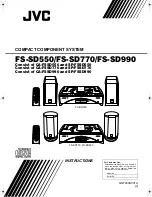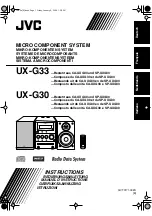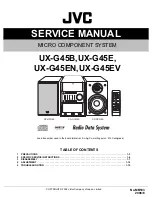
LiveScope and Perspective Sonar Settings
From the LiveScope or Perspective sonar view, select .
Gain: Controls the level of detail and noise shown on the sonar screen.
If you want to see the highest intensity signal returns on the screen, you can lower the gain to remove
lower intensity returns and noise. If you want to see all return information, you can increase the gain to see
more information on the screen. Increasing the gain also increases noise, and can make it more difficult to
recognize actual returns.
Depth Range: Adjusts the range of the depth scale.
Allowing the device to adjust the range automatically keeps the bottom within the lower portion of the sonar
screen, and can be useful for tracking a bottom that has minimal or moderate terrain changes.
Manually adjusting the range enables you to view a specified range, which can be useful for tracking a
bottom that has large terrain changes, such as a drop-offs or cliffs. The bottom can appear on the screen as
long as it appears within the range you have set.
Available in LiveScope sonar view.
Forward Range: Adjusts the range of the forward scale.
Allowing the device to adjust the range automatically adjusts the forward scale in relation to the depth.
Manually adjusting the range enables you to view a specified range. The bottom can appear on the screen as
long as it appears within the range you have set.
Available in LiveScope sonar view.
Range: Adjusts the range.
Allowing the device to adjust the range automatically keeps the bottom within the lower or outer third of the
sonar screen, and can be useful for tracking a bottom that has minimal or moderate terrain changes.
Manually adjusting the range enables you to view a specified range, which can be useful for tracking a
bottom that has large terrain changes, such as a drop-offs or cliffs. The bottom can appear on the screen as
long as it appears within the range you have set.
Available in Perspective sonar view.
Transmit: Stops the active transducer from transmitting.
Sonar Setup: Adjusts the setup of the transducer and the appearance of the sonar returns (
Perspective Sonar Setup, page 81
).
Edit Overlays: Adjusts the data shown on the screen (
Customizing the Data Overlays, page 9
).
LiveScope and Perspective Sonar Setup
From the LiveScope or Perspective sonar view, select > Sonar Setup.
Appearance: Configures the appearance of the sonar screen (
LiveScope and Perspective Appearance Settings,
).
Layout: Configures the layout of the sonar screen (
LiveScope and Perspective Layout Settings, page 82
).
Noise Reject: Reduces noise and interference and attempts to remove returns that are not actually targets in the
water.
Ghost Reject: Reduces the occurrence of "ghost" images, which are duplicated or reflected images that are not
actually targets in the water. The Ghost Reject setting sends more transmit power forward in the water to
see farther with less noise generated by the bottom. Adjusting the Ghost Reject and Noise Reject settings
together reduces the occurrence of "ghost" images most effectively. This feature is available in LiveScope
Forward orientation only.
TVG: Adjusts the time varying gain, which can reduce noise.
This control is best used for situations when you want to control and suppress clutter or noise near the water
surface. It also allows for the display of targets near the surface that are otherwise hidden or masked by
surface noise.
Overlay Data: Sets the data shown on the sonar screen.
Installation: Configures the transducer (
LiveScope and Perspective Transducer Installation Settings, page 82
).
Sonar Fishfinder
81
















































